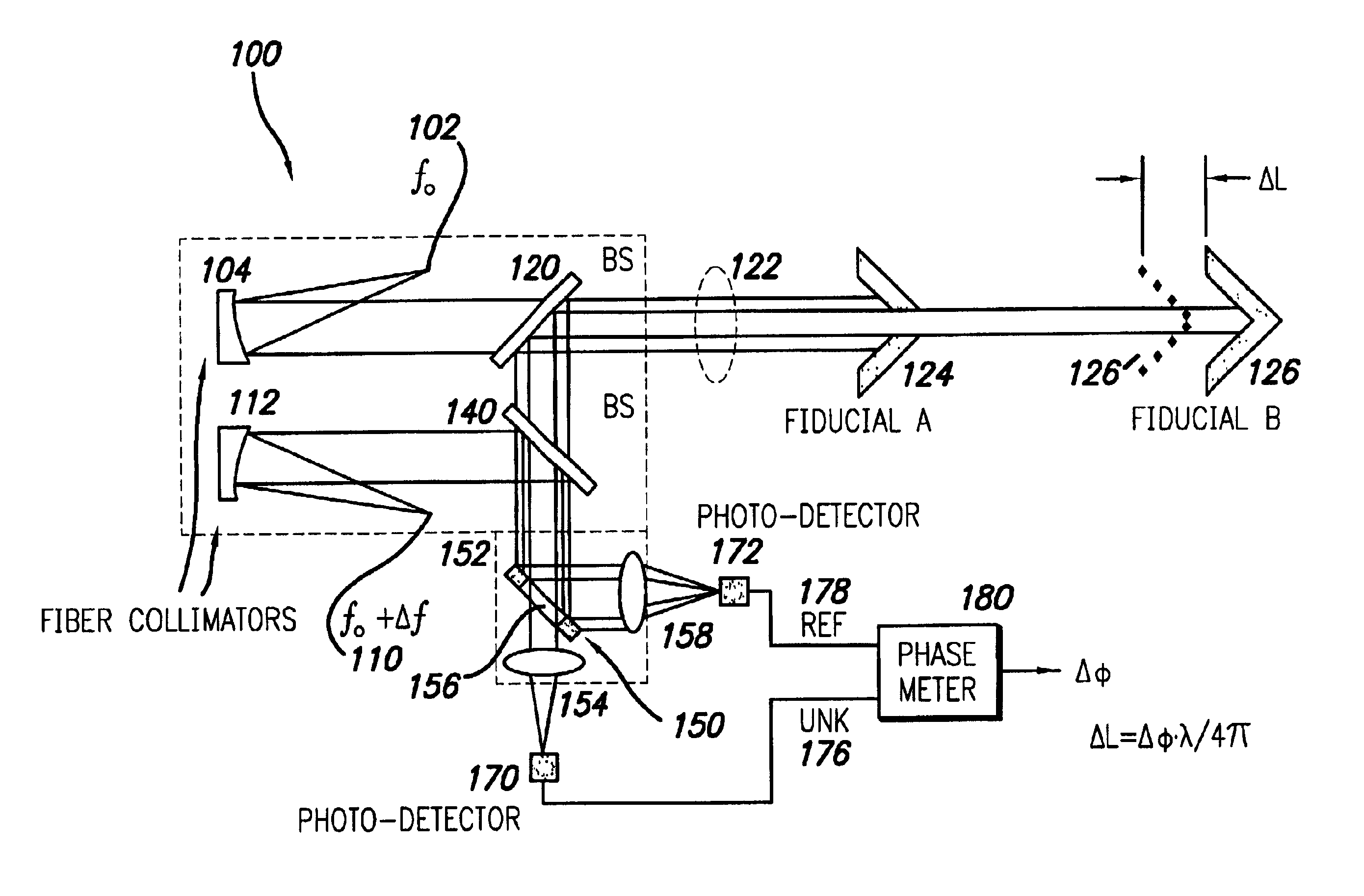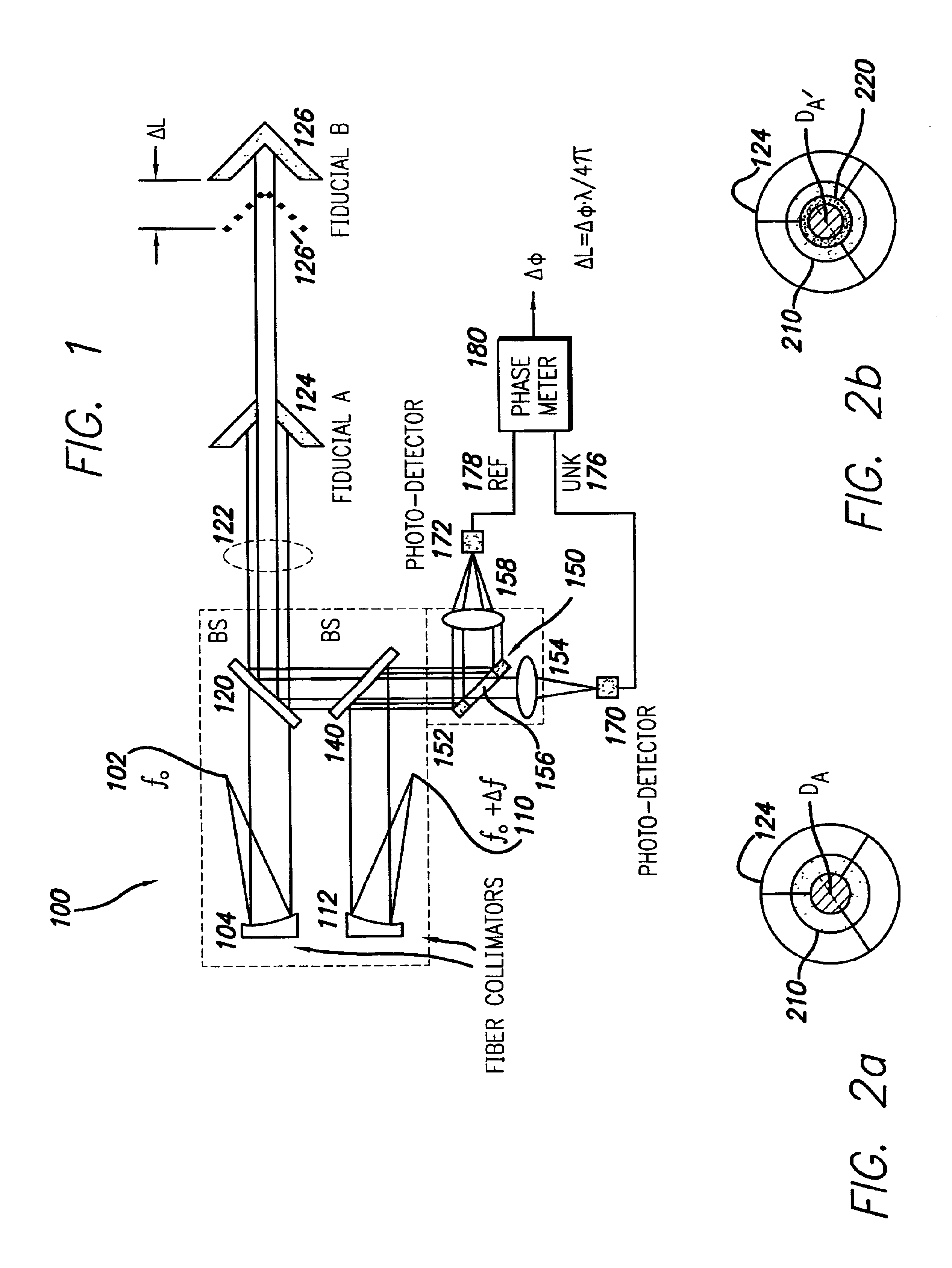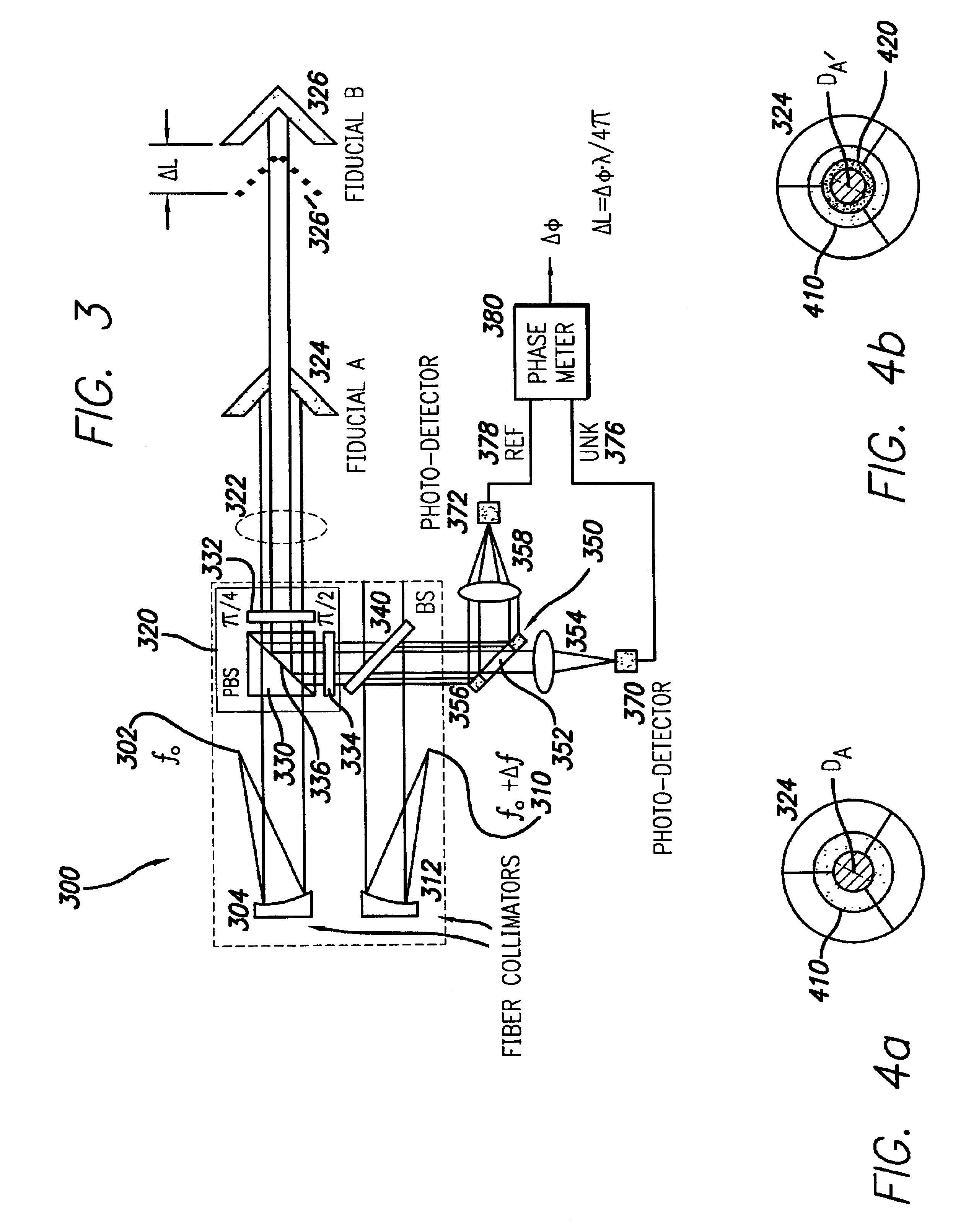Interferometric apparatus for ultra-high precision displacement measurement
a technology of interferometry and displacement measurement, applied in the field of interferometry, can solve the problems of polarization leakage, phase measurement contamination, and change of phase difference between the two, and achieve the effect of more accurate measurements of relative displacemen
- Summary
- Abstract
- Description
- Claims
- Application Information
AI Technical Summary
Benefits of technology
Problems solved by technology
Method used
Image
Examples
first embodiment
FIG. 1 shows the high precision interferometer 100 of the present invention. Light of the first wavelength f.sub.0 102 illuminates a first fiber collimator 104. Light of a second frequency, f.sub.0 +.DELTA.f, 110 illuminates a second fiber collimator 112. The light from the second source 110 at a frequency of f.sub.0 +.DELTA.f is transmitted to both photodetectors as described in more detail below. In this way, a known frequency of light is shared and is a part of both the reference signal and the reference (REF) and displacement / unknown (UNK) signals.
Light from the first light source f.sub.0 102 illuminates the first fiber collimator 104 and is transmitted to a first, or displacement, beam splitter 120. Some of this light is reflected towards the upper portion of the page showing FIG. 1 and exits out of consideration (or is discarded) for present purposes. Another portion of the light 122 is transmitted to Fiducial A 124 and Fiducial B 126. Note should be taken that reference 122 r...
second embodiment
FIG. 3 shows the high-precision interferometer 300 of the present invention. FIG. 3 shows an interferometer 300 that is identical to the interferometer 100 shown in FIG. 1, except that the beam splitter 120 in FIG. 1 has been replaced by a beam splitting and polarizing system apparatus 320, having a polarizing beam splitter 330, a quarter-wave plate 332 and a half-wave plate 334. The quarter-wave plate 332 is placed between the polarizing beam splitter 330 and Fiducials A and B 324, 326. The half-wave plate 334 is placed between the polarizing beam splitter 330 and the second beam splitter 340.
Generally, the operation of the high-precision interferometer 300 of FIG. 3 is the same as that for the interferometer 100 of FIG. 1, save for the operation of the polarizing beam splitting system 320 indicated by the corresponding dotted line box.
In operation, the f.sub.0 light of the first light source 302 is transmitted to the first fiber collimator 304. The fiber collimator reflects the li...
PUM
 Login to View More
Login to View More Abstract
Description
Claims
Application Information
 Login to View More
Login to View More - R&D
- Intellectual Property
- Life Sciences
- Materials
- Tech Scout
- Unparalleled Data Quality
- Higher Quality Content
- 60% Fewer Hallucinations
Browse by: Latest US Patents, China's latest patents, Technical Efficacy Thesaurus, Application Domain, Technology Topic, Popular Technical Reports.
© 2025 PatSnap. All rights reserved.Legal|Privacy policy|Modern Slavery Act Transparency Statement|Sitemap|About US| Contact US: help@patsnap.com



